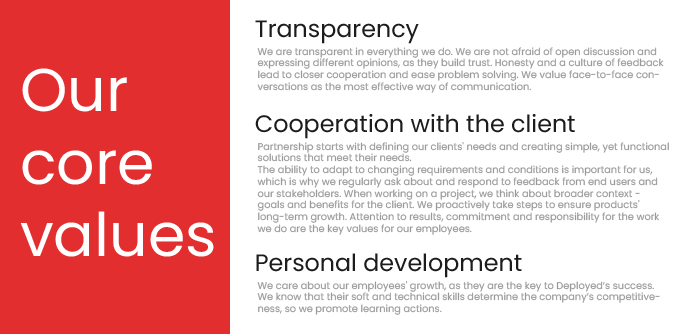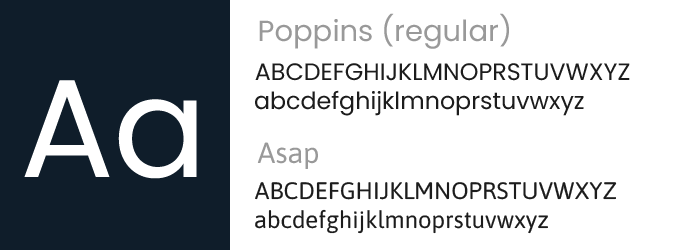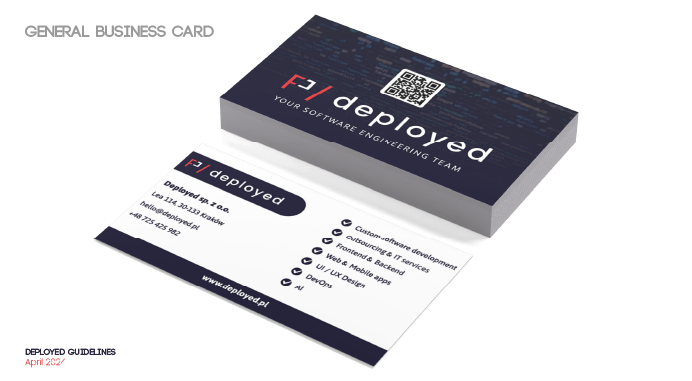What is a brandbook and what is its purpose?
Ewelina Lichocka | 2024-04-30About brandbook
You have probably heard the term "brandbook" more than once in your career. Many people may associate it exclusively with the logo, and to some extent they are right. Looking through online articles on what a brandbook is, we often come across a definition that it is a set of rules for a logo and examples of its use in various situations. The fact is, a brandbook is a comprehensive document that contains many elements concerning not only the visual aspect of the brand but also the ways to communicate with the customer. We can find there the goals and values of the brand as well. A well-constructed and defined brandbook helps to increase brand recognition, thanks to which users can relate to the brand's visual identity or the slogans used. This process is otherwise known as brand awareness. The greater the awareness of a brand, the greater its popularity and thus its earnings and position in the market.
Is brandbook popular? No. Only ¼ of companies have a defined brand style guide and this is mostly the case for big brands. There is a certain perception that creating a brandbook is too time-consuming and unnecessary a process. This is a misguided thinking that can have many consequences. Let's talk about those.
Consequences of neglected visual identity
Let's assume that there is a brand that doesn’t have a properly defined visual identity. What happens if such a company delegates to various marketing and advertising companies the creation of materials such as a website, flyers, business cards, or banners? There is a very high chance that the entire image created will be inconsistent, chaotic, and created according to the advertising agency ruleset, instead of the specific rules that a professional brand should have. Such a procedure has a very negative impact on business because a company will be less recognizable in the market. As a result, the company may be forced to offer low prices to be competitive.
Using different marketing content each time may lead to confusion and most likely not be remembered by the customers. They may not trust the brand. All of that increases the chance potential customers will choose the services of the competition over yours.

What does the brandbook bring to the company?
Brands that have brandbooks, and thus have a consistent visual identity across all their platforms, can increase their revenues by up to 30%.
Consistent marketing helps to expand the range and improves a brand's understanding by the audience. What's more, a brandbook not only improves communication between a company and its customers but also between the company and its employees. It is because a brandbook is a comprehensive compendium of knowledge that will allow them to have a good understanding of what exactly a company represents, values it carries and goals it pursues.
Any organization can have a brandbook, regardless of size and industry. It can vary from a large IT company to a small neighborhood convenience store. Brandbook is intended for any brand that wants to create a consistent image and ensure efficient communication with its audience. Brandbook is especially recommended to brands that operate in competitive industries, so they can be distinguished from others.\
Remember!
- Just having a brandbook doesn’t guarantee immediate success in the market. It’s still extremely important to consistently follow the guidelines and rules it has.
- The market situation, the current goals of the brand and its needs may change over the years. Therefore, remember to regularly update the brandbook and adapt it to the current situation.
Brandobook structure
You’re probably wondering what exactly should be included in a brandbook document. Well, it can be divided into two parts. Introduction and Brand guidelines. /
Introduction
- The origin of the brand and its history
When was the brand founded, and where did the name come from? - Mission and vision
What direction is the brand heading and what are its goals? - Values
What are the fundamental principles that reflect your business?

- Archetype framework
What characteristics does your brand have and how does it communicate with its audience? - Target audience
Who are your services or products dedicated to? - Services or products offered
What do you offer your audience? - Tone of voice
How do you want to communicate with your audience? Through what channels do you want to communicate with them? What vocabulary do you want to use? Formal or informal? Maybe funny or serious (Keep in mind who your target audience is)? - Slogan
A slogan is a reflection of your company. It can be helpful to answer the questions: what is the idea of your brand? What does it offer? (Tip: Slogan is not a seasonal advertising catchphrase)
Brand Guidelines
- Logo
This is one of the most extensive sections in the brandbook because it contains many cases related to the logo such as: the presentation of the wordmark itself, the symbol, dimensions, protective area, vertical version, horizontal version, color versions (color, black, white, grayscale), positioning, use cases, allowed or not allowed modifications

- Color palette
Define primary and secondary colors in different color modes such as RGB, CMYK, HEX

- Typography
Choose a font that will perfectly work with your logo and get necessary information to your audience. Typography is not just about letters. Typography is an art that incorporates information such as text layout, spacing, sizes, or color contrast. The font affects your brand recognition as well.

- Shapes
Shapes will often appear on your website or materials such as flyers. Define shapes that will carry text, photographs, or illustrations. Take care of a good composition so they blend perfectly with other elements on different platforms. - Photographs
You need to make sure that the communication is consistent with photos as well. How will the photographs be combined with the shapes and typography on the site? - Icons
Icons improve communication with the audience and make navigation easier. They should be simple and intuitive. This is the section where we can add information about the grid, sizes, and thickness of outlines. - Illustrations
Why does your brand use illustrations, what does it want to express with them and what should be their style? - Infographics
What will infographics communicate, in what situations will they be used, and where? - Patterns
Do you use patterns in your visual communications? Present what they look like and explain in what situations and how to use them. - Use cases
This is the place for visualizations of the website, business cards, and examples using your logo, shapes, or various elements used in branding.

Fine, but what is the relationship between brandbook and IT?
Our projects vary from web applications to marketing pages at Deployed. While working on them, we care not only about technical issues but also pay great attention to visual aspects. We know the consistency of visual communication plays a big role in brand development. As an IT company, we are aware that both mobile and web applications that we create for our clients should follow the rules presented in their brandbooks. Those branding rules are related to UI/ UX design. Both areas focus on achieving the best user experience. Each UI/UX designer should first get familiar with their client's brand, understand their mission, purpose, and method of communication. Then he should reflect them in the mockups./ Other common factors of branding and UI design are color palettes, typography, and layout. The use of different colors or fonts than those specified in the brandbook can make the whole look of the brand incoherent. Its various advertising elements can make the audience feel that they come from completely different companies. Designers must also ensure that the designed mockups are visually consistent with other advertising elements of the brand. Whether someone picks up a flyer or browses a company's website, he should know they belong to the same brand.
Summary
We know that making a professional company brandbook requires a lot of work and involves many people. It requires close cooperation between the board of directors and an advertising agency specializing in image creation because values or goals can’t be invented by an external company. Despite the long duration of this process, it is worth having one. With the future of the brand in mind, this step can bring many benefits such as more effective communication with the customers, and an increase in their loyalty. Having a brandbook will also facilitate internal processes within the company, providing employees with a better understanding of the company's direction and unifying operations across all areas of the business.
Sample brandbooks:
Capgemini:
https://visualidentity.capgemini.com/wp-content/uploads/2019/06/Capgemini_Brand-Guidelines_v1-0.pdf
Skype:
https://download.skype.com/share/blogskin/press/skype_brandbook.pdf
Nike football:
https://issuu.com/logobr/docs/brandbook_nikefootball
Firefox:
https://wiki.mozilla.org/images/d/df/Firefox_Brand_Book.pdf
